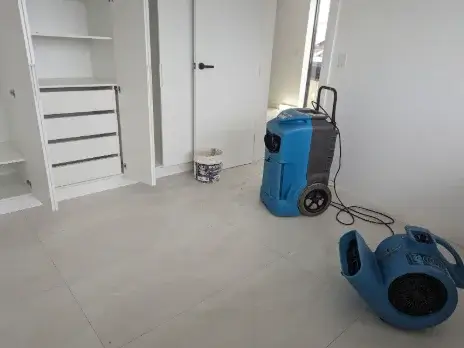Mould growth is not just an unsightly nuisance; it poses serious health risks and can significantly damage your property. Understanding the common causes of mould growth and how mould remediation services can help is essential for maintaining a healthy and safe environment.
Understanding Mould and Its Impact
Mould is a type of fungus that thrives in damp, warm, and humid environments. It reproduces by releasing spores into the air, which can be inhaled by humans and animals, leading to various health issues. Common symptoms of mould exposure include respiratory problems, allergies, and skin irritations. Prolonged exposure can exacerbate these conditions, especially in individuals with pre-existing health issues.
Common Causes of Mould Growth
Moisture and Humidity
Moisture is the primary catalyst for mould growth. Leaky pipes, roofs, or windows can introduce unwanted moisture into your home. Additionally, high humidity levels create an ideal breeding ground for mould. Ensuring your home is well-ventilated and addressing any leaks promptly can significantly reduce the risk of mould.
Poor Ventilation
A lack of proper ventilation can trap moisture inside your home. Bathrooms, kitchens, and basements are particularly vulnerable due to their high moisture levels. Installing exhaust fans and ensuring that these areas are well-ventilated can help prevent mould growth.
Flooding and Water Damage
Flooding or any form of water damage can lead to significant mould problems. After a flood, water can seep into carpets, walls, and other materials, creating a perfect environment for mould to thrive. It’s crucial to dry out affected areas as quickly as possible to prevent mould from taking hold.
Condensation
Condensation occurs when warm air meets cold surfaces, leading to moisture buildup. This is common on windows, metal pipes, and walls. Reducing humidity levels and improving insulation can help minimise condensation and the risk of mould growth.
Organic Materials
Mould feeds on organic materials such as wood, paper, and fabrics. Homes filled with these materials, especially if they are damp, are more susceptible to mould infestations. Regular cleaning and maintaining low humidity levels can help protect these materials from mould damage.
How Mould Remediation Can Help
Mould remediation is essential in effectively removing mould and preventing future growth. These services offer a comprehensive approach to dealing with mould, ensuring your home is safe and healthy.
Professional Assessment and Inspection
Mould remediation begins with a thorough assessment and inspection of your property. Professionals identify the source of mould, the extent of the infestation, and the best course of action for removal.
Mould Removal and Cleaning
Once the inspection is complete, the remediation team will remove the mould using specialised equipment and techniques. This may include cleaning, sanitising, and deodorising affected areas to ensure all mould spores are eliminated.
Prevention Strategies
After mould removal, prevention is key to avoiding future outbreaks. Remediation experts provide guidance on maintaining a mould-free environment, such as improving ventilation, repairing leaks, and controlling humidity levels.
Handling Severe Infestations
For severe mould infestations, especially those involving toxic moulds, professional remediation services are crucial. These experts have the skills and equipment to safely remove hazardous mould, protecting your health and property.
Understanding Mold Remediation Costs
The cost of mould remediation varies depending on the extent of the infestation and the size of the affected area. Factors influencing cost include:
- Size of the Area: Larger areas will naturally require more resources and time to remediate.
- Severity of the Infestation: Severe infestations may require more intensive treatment and possibly the replacement of damaged materials.
- Location: Areas that are difficult to access may incur additional costs due to the complexity of removal.
While the cost of mould remediation can be a concern, it’s important to consider the potential health risks and property damage caused by untreated mould. Investing in professional mould remediation services can save you money in the long run by preventing further damage and health issues.
DIY vs. Professional Mould Remediation
While minor mould problems can sometimes be handled with DIY solutions, professional mould remediation is recommended for larger or more severe infestations. Professionals have the expertise, equipment, and safety protocols necessary to effectively and safely remove mould.
Benefits of Professional Services
- Thorough Inspection: Professionals can identify hidden mould and address the root cause of the problem.
- Advanced Techniques: They use specialised equipment and techniques that are more effective than DIY methods.
- Safety: Handling mould can be hazardous, and professionals have the necessary protective gear to ensure safety.
- Long-term Solutions: Professionals provide solutions that prevent future mould growth, saving you time and money.
Conclusion
Understanding the common causes of mould growth and the benefits of mould remediation is crucial for maintaining a safe and healthy home. By addressing moisture issues, ensuring proper ventilation, and seeking professional remediation services when needed, you can protect your home and health from the dangers of mould. Investing in mould remediation not only ensures the safety of your living environment but also preserves the value and integrity of your property.


